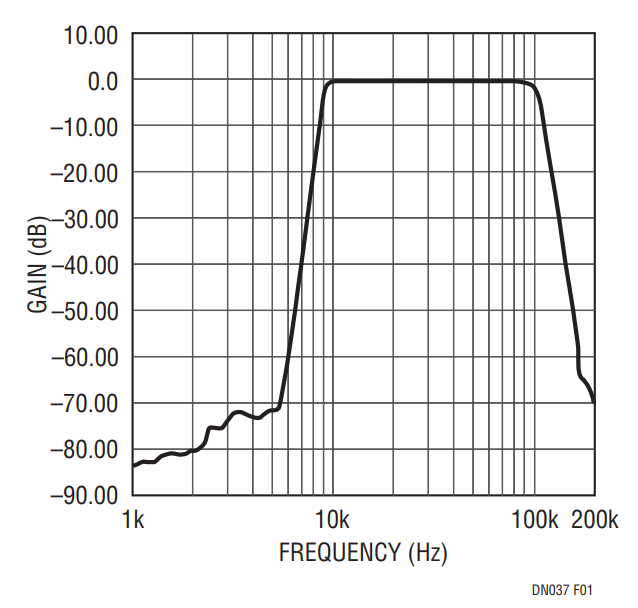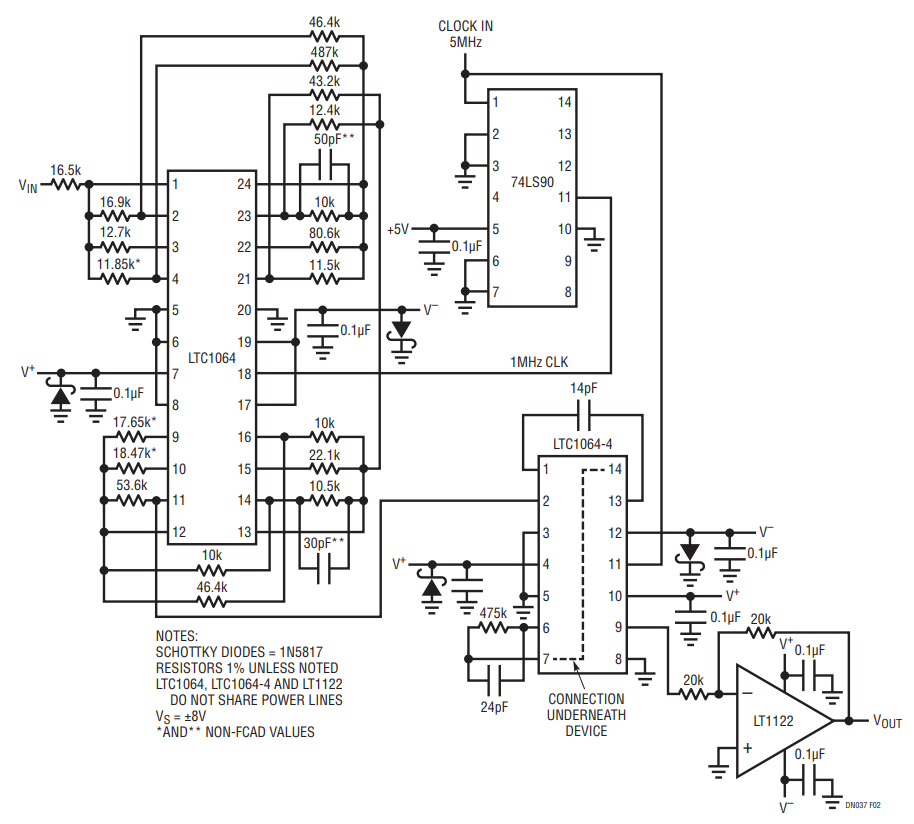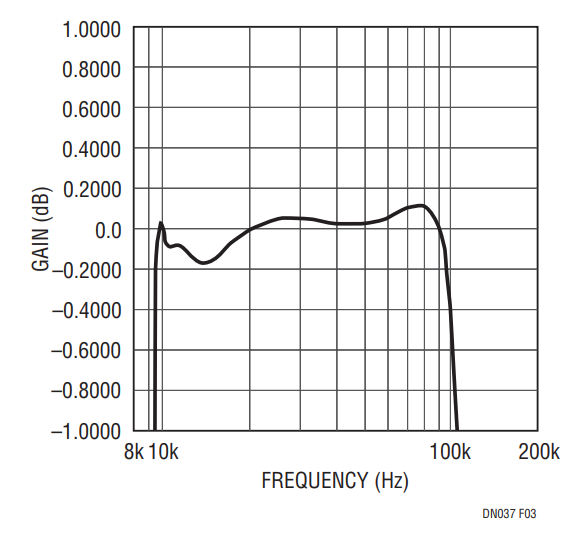Design Note 37: High Dynamic Range Bandpass Filters for Communication
Introduction
Octave or decade wide bandpass filters are non-trivial to design. Wide bandpass filtering requires the designer use a highpass filter at the input in series with a lowpass filter to achieve the desired specifications. This becomes evident if one examines the transfer functions of the state-variable-filter configuration, be it switched capacitor or active RC. Either option limits severely the achievable dynamic range if a wideband bandpass filter is designed using the bandpass output.
Wideband bandpass filters occupy a niche in the communications area of signal processing. The wideband bandpass function is required in receiver IF applications which traditionally use the crystal filter and/or active RC’s. Sonar applications also demand steep, wide, low noise bandpass filters to allow analysis of “chunks” of the frequency spectrum, one at a time or in parallel.
Recent improvements in switched capacitor filter technology allow designers the luxury of using switched capacitor filters in these applications. True clock tuning allows variable bandwidth filters to be implemented with only a few parts.
This note details the design of a wideband (10kHz-100kHz) bandpass filter using a single LTC1064 plus an LTC1064-4. The LTC1064 is a quad universal switched capacitor filter while the LTC1064-4 is the same silicon with integrated resistors configured to implement an 8th order elliptic lowpass filter. Both filters have low noise and can operate to frequencies beyond 100kHz. The combination bandpass filter has a set of tough design specifications: total integrated noise in the passband less than 350μV, passband ripple less than 0.4dB or ±0.2dB, and steep rolloffs at the band edges (–70dB at 5kHz, and –70dB at 200kHz).
Design
The design ideology combined an LTC1064-4 elliptic lowpass filter with a highpass LTC1064 designed using Linear Technology’s FilterCAD filter design software. The LTC1064-4 provides an attenuation of greater than 70dB at 2 times cutoff, while the highpass filter was designed to be almost the mirror image of the lowpass filter. Figure 2 shows the schematic of the composite bandpass filter. Note the 74LS90 is used as a divide by 5 whose output clocks the LTC1064 used as the 10kHz highpass filter. In addition to providing both 5MHz and 1MHz clocks, this circuit allows the clocks to be synchronous. This is essential for well behaved operation of the sampled data filters.

Figure 1. Frequency Response. VIN = 2.2VRMS, Output Buffer = LT1122.

Figure 2. Schematic Diagram 10kHz-100kHz Bandpass Filter.
Test Results
Figure 1 shows the overall frequency response of the bandpass filter. Note the steep slopes at the transition regions of the filter. The measured noise in the passband of the filter was 320μVRMS. Passband ripple is shown in Figure 3. Figure 3 shows excellent ripple specifications of less than ±0.2dB. It should be noted that the values of the resistors marked with an asterisk were modified slightly from the values given by FilterCAD. Otherwise the passband ripple measured better than ±0.4dB. Additional note should be made of the 50pF and 30pF capacitors shown with double asterisks. These capacitors serve as RC filters on two of the highpass outputs of the LTC1064 to rolloff the response of the HPF (well past the passband of the overall filter) to limit noise aliasing back to the filter’s passband. Note that these capacitors may limit the overall tunability of the filter or they may need a range changing switch.

Figure 3. Passband Frequency Response. VIN = 2.2VRMS, Output Buffer = LT1122.
Conclusion
A 16th order low noise high quality bandpass filter can be designed with only four active components and a handful of resistors. The filter meets specifications that can only be approached with the most sophisticated hybrid filter solutions. Further, the filter was primarily designed with the FilterCAD program, so that the designer may change parameters with the push of the “Enter” key. The filter is another in the amazing set of achievements available to the system designer by using the new switched capacitor filters from Linear Technology.
